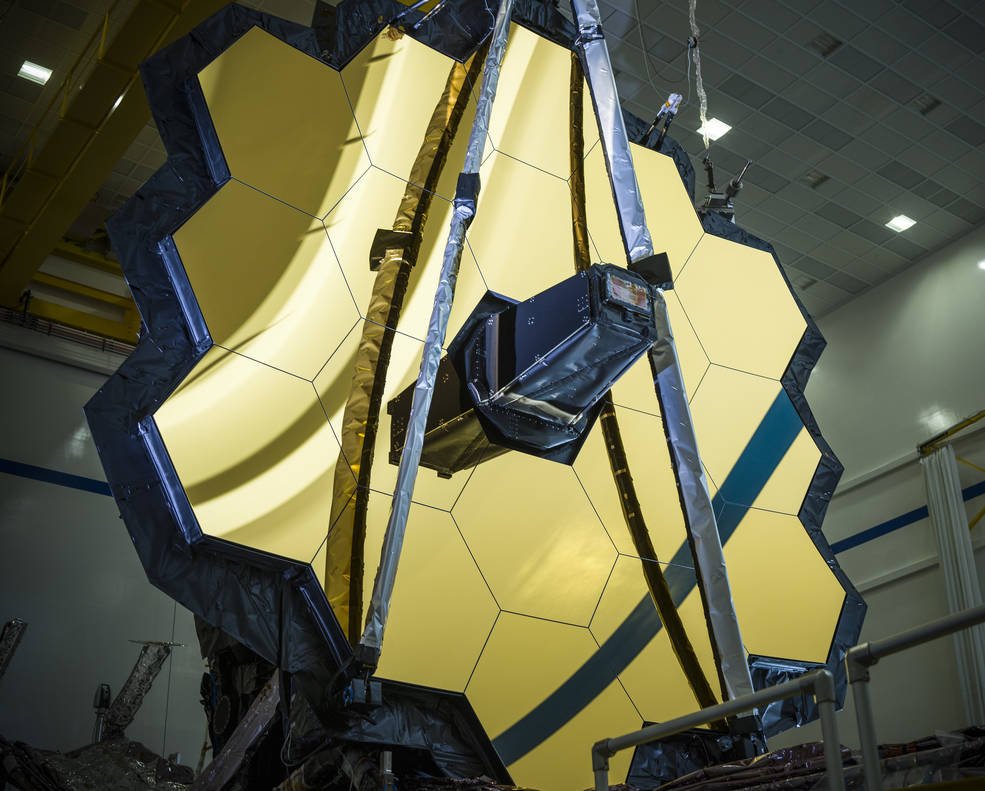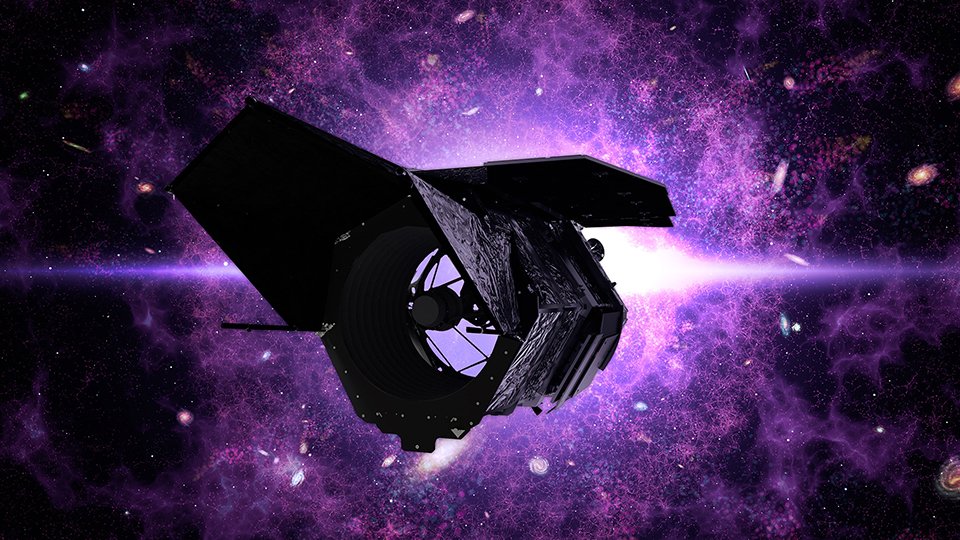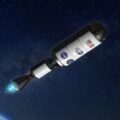

Welcome to this week’s installment of The Intelligence Brief… as NASA gears up for the release of the first images captured by the James Webb Space Telescope, this week we’ll be looking at 1) the stunning teaser NASA has given us in advance of the July 12 release, 2) where we are currently with Webb and its mission, and 3) why the stunning images we will all be seeing in the days ahead have some of the folks at NASA looking ahead at the future.
Quote of the Week
“What questions might Webb observations raise now that will turn our curiosity to things unimagined? We will soon begin to know how Webb will transform our understanding of the universe.”
– Eric Smith, Webb program scientist
Before we get into this week’s analysis, a few of the stories we’ve been covering in recent days at The Debrief include new language proposed for inclusion in the 2023 NDAA, which aims to ensure transparency about information the Pentagon collects on UAP. Elsewhere, the mysterious “Georgia Guidestones” were recently vandalized in an early morning explosion that has left Elberton residents rattled. Also, gene patents on dinosaur DNA have yet to be filed, but they could soon be a lucrative prospect for many biotech companies.
Meanwhile in video news, Chrissy Newton recently sat down with journalist George Knapp and researcher Colm Kelleher in the latest installment of Rebelliously Curious. Among the topics Chrissy covers with Knapp and Kelleher in the interview are the initial studies undertaken by the National Institute for Discovery Science (NIDS) in the 1990s, and a number of intriguing hypotheses Kelleher proposed about what might be occurring at the infamous Skinwalker Ranch in Utah’s Uintah Basin. As always, you can see all of our latest videos and podcasts over on The Debrief’s YouTube channel.
And with all that behind us, it’s now time to look at what we know about the first images that NASA will be revealing from the James Webb Space Telescope, and why a recent teaser already has experts really excited.
The James Webb Telescope Drops a Stunning Teaser
Within just the next few days, the world will finally see the first full-color images captured and relayed back to Earth by NASA’s James Webb Space Telescope. Needless to say, there has been a lot of excitement in advance of the big reveal, which will take place on July 12.
With the help of Webb’s Fine Guidance Sensor (FSG) built by NASA’s partners with the Canadian Space Agency, the telescope is able to lock onto targets and produce imagery in unprecedented detail. As a teaser in advance of the kinds of imagery we will be seeing on July 12, NASA recently released an engineering test image (below) produced by the telescope that demonstrates the FGS’s incredible precision.
“Talk about an overachiever!” NASA Tweeted from its official Webb Telescope Twitter account. “Gaze at this test image — an unexpected & deep view of the universe — captured by Webb’s Fine Guidance Sensor (FGS) in May,” about which the agency noted that “taking glamour shots isn’t even FGS’s main job.”


Eric Berger, Senior Space Editor at Ars Technica, said the image “almost feels like a flex because it is so good for a throw-away engineering image.”
Whether the main job of Webb’s FGS or not, the images it is able to produce are indeed nothing short of glamorous, and will help reshape how we see our universe in the years ahead.
Where We Are Now with Webb?
Webb is the most advanced space-based observatory ever placed into orbit by humans. The imagery it collects, which provides a view of distant regions of our universe in unprecedented detail, was built to collect information in longer infrared wavelengths, allowing it to collect information that both complements and expands the scope of discoveries already made in the past by the Hubble Space Telescope.
Webb’s unique ability to collect longer wavelengths than its predecessor allows it to effectively peer back into time, and provide astronomers today with visual representations of some of the universe’s earliest galaxy formations. Among the mysteries that NASA hopes to unravel with the help of Webb’s advanced imagery is the question of supermassive black holes at the centers of galaxies, how they came to exist there, as well as how planets and stars form within dusty regions of space that Hubble and other telescopes aren’t able to see into like Webb can.


The potential habitability of distant planets might also be determinable with Webb data, and even the lingering questions about dark energy might finally begin to be answered with help from the telescope’s advanced scientific capabilities.
According to a recent update NASA provided in a blog post, “Webb is moving into the phase of full science operations that includes a highly impressive suite of science programs from the solar system to the distant universe.”
“The entire Webb team is ready to celebrate the long journey to this point and embark on the next few decades of groundbreaking infrared astronomy,” the post stated.
With Webb’s First Images, NASA Looks to the Future
Webb program scientist Eric Smith, who has worked with the Webb program since its earliest stages that extend back to the 1990s, recently expressed his excitement about the images NASA will reveal in the coming days.
“I’m as excited as everyone else who is anticipating the release of the first beautiful full-color images and data,” Smith said, who called it “an audacious endeavor,” noting that NASA and its partners will soon provide “an amazing new tool to explore space.”
Yet even with the anticipation in advance of the release of Webb’s first images, Smith made a point to emphasize the next steps toward discovery that NASA will bring to fruition in the years ahead, which includes Webb’s eventual successor: the Nancy Grace Roman Space Telescope.


“Unlike the existing facilities, Roman is designed to capture images of huge portions of the sky all at once, allowing scientists to look for very rare and even time-variable phenomena,” Smith said in a statement. “This impressive survey capability will come online in the latter half of the decade.”
Smith also says that NASA has “begun to think about how we might build a telescope specifically designed to image and study nearby exoplanets,” which might utilize existing technologies comparable to those already in use with Webb. “All the facilities we currently have, and those in the planning stage, arose from questions ignited by astronomers seeking to answer age-old questions about our universe using previous observatories.”
Despite all the promise and potential that NASA’s future projects may hold, Smith’s excitement is clearly grounded in the current efforts Webb will be undertaking, the first of which the world will be viewing in just a few days.
“The world is about to be new again,” Smith said.
For all of the latest information on the James Webb Space Telescope, its current status, and updates about its mission, visit NASA’s official Webb Space Telescope Page, where you can track its current position, explore its deployments, and keep up to date on news and events. And of course, the countdown page for the release of Webb’s first round of images can be found here, along with information on how media can attend and view the images.
That concludes this week’s installment of The Intelligence Brief. You can read past editions of The Intelligence Brief at our website, or if you found this installment online, don’t forget to subscribe and get future email editions from us here. Also, if you have a tip or other information you’d like to send along directly to me, you can email me at micah [@] thedebrief [dot] org, or Tweet at me @MicahHanks.


Here are the top stories we’re covering right now…
- New Unidentified Aerial Phenomena Reporting Procedures Outlined in Amendment to FY 2023 NDAA
New language proposed for inclusion in the 2023 NDAA aims to ensure transparency about information the Pentagon collects on UAP.
- Mysterious Georgia Guidestones, “America’s Stonehenge,” Vandalized in Early Morning Explosion
The curious monument has long been a source of intrigue and speculation due to the content of messages that appear on the monument’s large stone columns.
- New Solar Panel Could Be a Game Changer at Home, and on Future Space Missions
Researchers at Stanford University have developed a new type of solar panel that can catch sunlight in all directions.
- Quantum-Gravity Engineers of the Future May Find Local and Extraterrestrial Opportunities
Decades after a Quantum-Gravity theory will be discovered, there might be job advertisements for engineers who use it to build vehicles that would carry humans to the stars faster than imagined before.
- More Optimism Leads to a Longer Lifespan, New Research Suggests
Higher levels of optimism were found to be linked to longer lifespans in several participants in a new study.
- How Much is Dinosaur DNA Actually Worth?
Gene patents on dinosaur DNA have yet to be filed, but they could be a lucrative prospect for many biotech companies.
- 5 Surprising “Non-Scientist” Who Contributed to Science
From Edgar Allan Poe to Isaac Asimov, here are five non-scientists whose work contributed advances to science.
- Can Wearable Technology Really Improve Your Health?
Apollo wearable provides touch therapy to rebalance your nervous system when it’s time to really let go and relax.
- Mind-Bending Physics Reveals Electrons Travel in “Lanes” While Moving Along Quantum Wires
A new study from the University of Cambridge reveals that electrons can simultaneously possess different energy levels.
